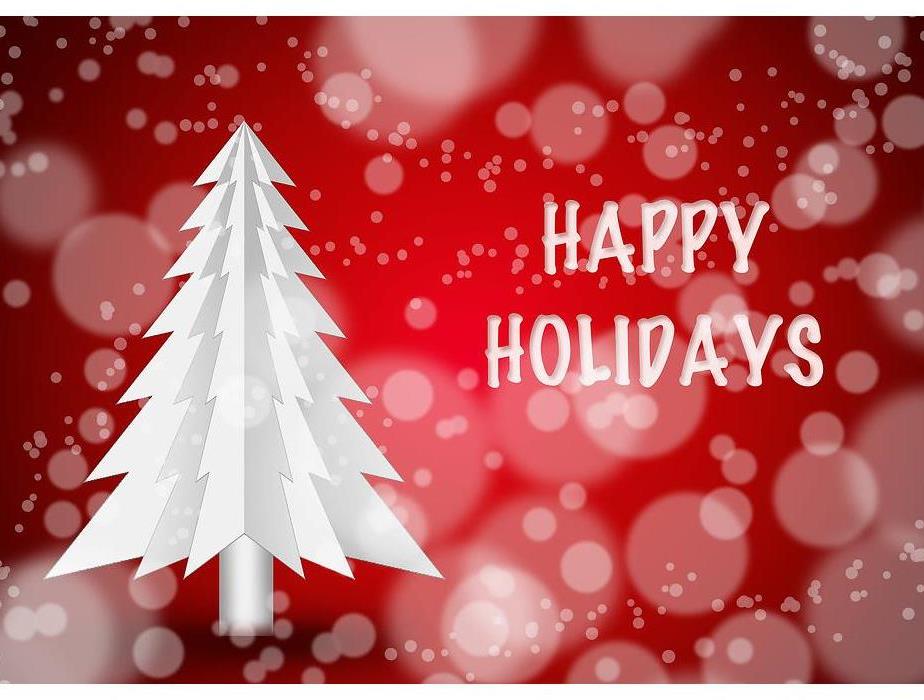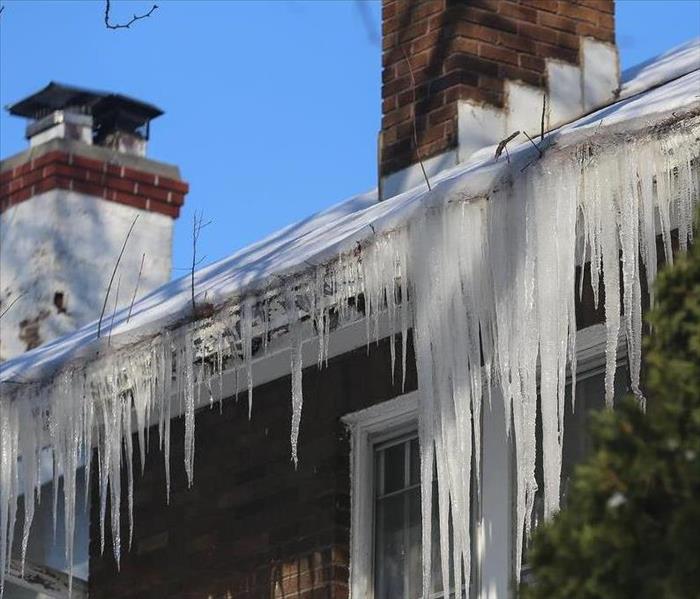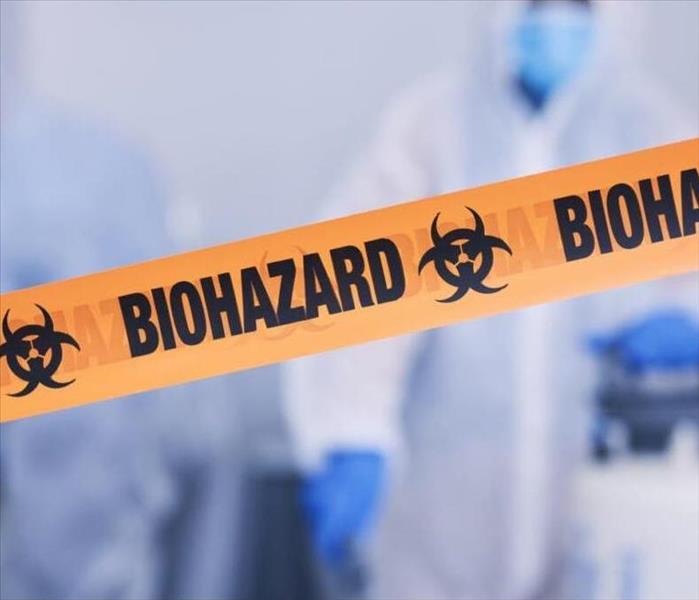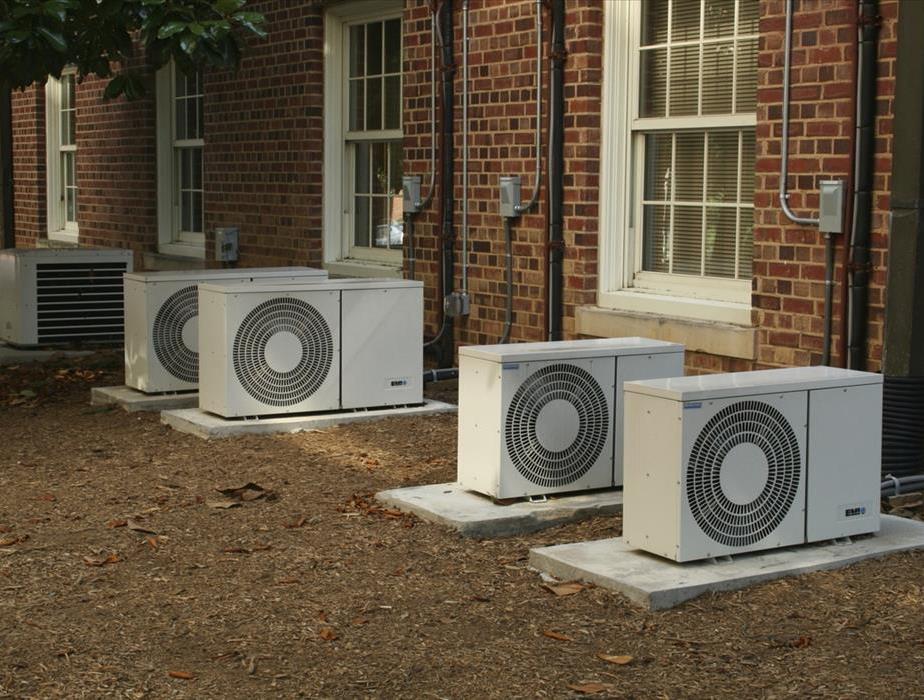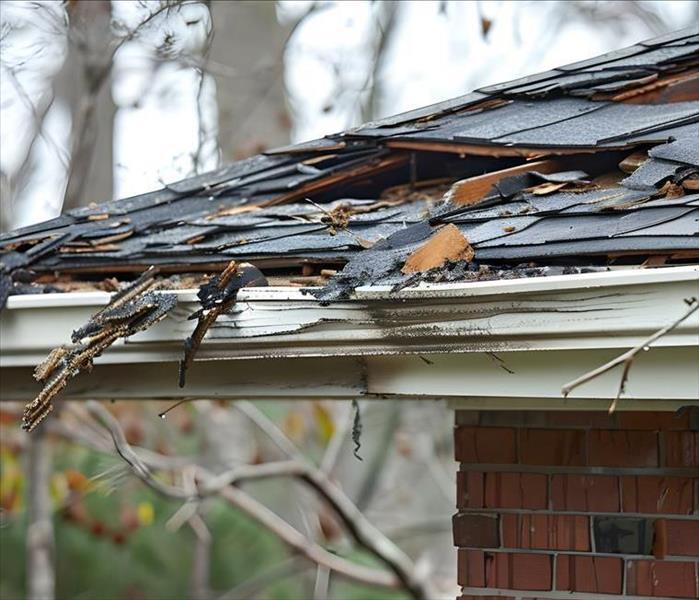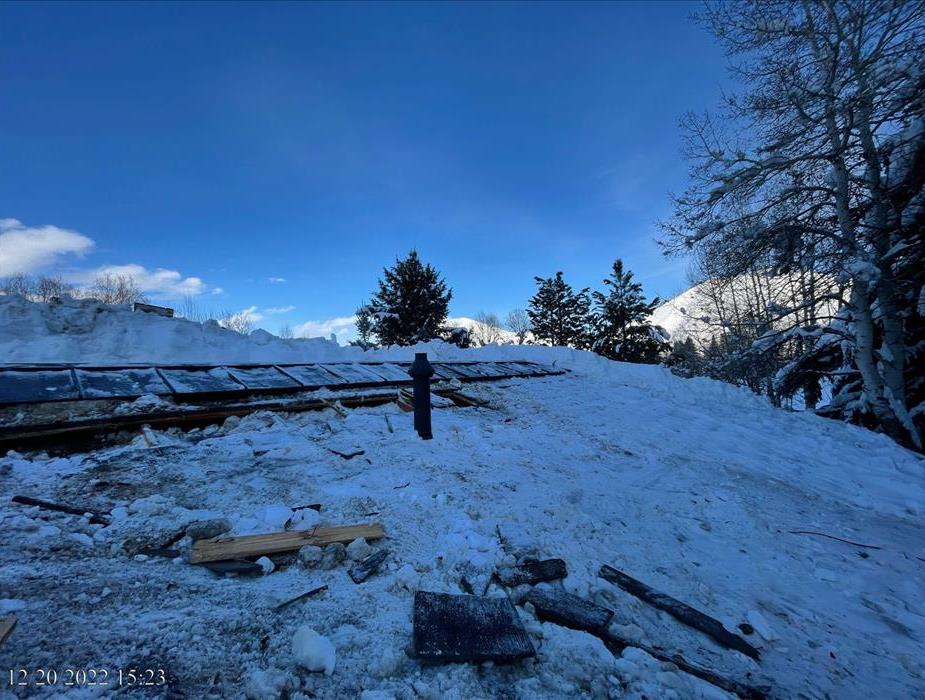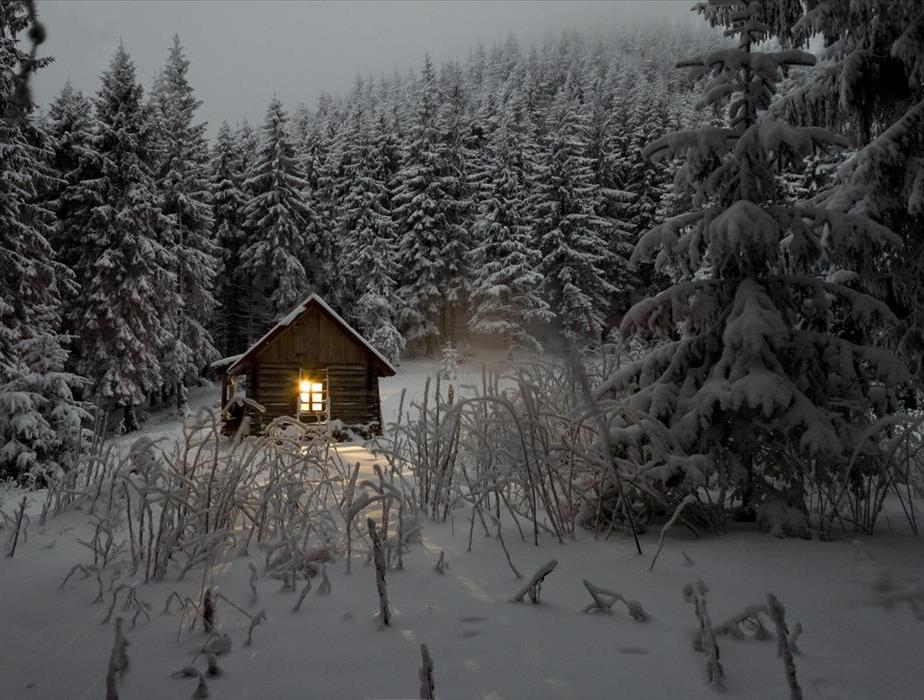Recent Posts
A Holiday Season: From Christmas to New Year’s With SERVPRO of Twin Falls and Jerome Counties
12/23/2024 (Permalink)
The holiday season is a time for joy, celebration, and making memories with loved ones. But between Christmas festivities and New Year’s parties, your home faces unique risks that could dampen the holiday cheer. At SERVPRO of Twin Falls and Jerome Counties, we’re here to ensure your holidays are safe, stress-free, and full of peace of mind.
Common Holiday Risks
- Christmas Tree Hazards: Real Christmas trees add a festive touch but can become a fire hazard if not properly maintained.
- Keep your tree well-watered.
- Place it away from heat sources.
- Use LED lights to reduce fire risk.
If a mishap occurs, Our fire damage restoration services can restore your home to its holiday best.
- Frozen Pipes and Ice Dams: Winter weather can wreak havoc on your home’s plumbing and roof. Frozen pipes can burst, and ice dams can cause water to seep into your home. To protect your property:
- Insulate exposed pipes.
- Keep gutters clear of debris.
- Ensure proper attic ventilation to prevent ice dams.
Our water damage restoration experts are available 24/7 to handle emergencies, minimizing damage and stress.
- Preparing Your Home for the New Year: The New Year is a perfect time to ensure your home is ready to face the rest of winter. Key steps include:
- Inspecting and maintaining your heating system for optimal performance.
- Checking for drafts or leaks around windows and doors.
- Cleaning and organizing spaces to start the year fresh and reduce clutter-related hazards.
We can assist with thorough inspections and cleaning services, ensuring your home is safe and comfortable for the months ahead.
New Year, Fresh Start
As you ring in the New Year, now is the perfect time to ensure your home is in top shape for the months ahead. Consider:
- Scheduling a professional cleaning to remove allergens and improve indoor air quality.
- Addressing any lingering damage from earlier in the season.
- Preparing your property for winter’s continued challenges.
Why Choose Us?
At SERVPRO of Twin Falls and Jerome Counties, we’re committed to making your holiday season “Like it never even happened.” Our certified technicians are ready to assist with:
- Fire and smoke damage restoration.
- Water damage remediation.
- Comprehensive cleaning and preventative services.
Celebrate Without Worry
Whether it’s Christmas, New Year’s, or the days in between, We are your trusted partner for a safe and happy holiday season. Let us handle the unexpected so you can focus on what matters most—time with family and friends.
Contact us today to learn more about our holiday services or to schedule assistance. Call us today. From our family to yours, we wish you a merry Christmas, a happy New Year, and a season filled with joy and safety!
A Safe and Merry Christmas: Protecting Your Home This Holiday Season
12/16/2024 (Permalink)
As the holiday season brings joy and celebration, it’s also a time when homes are at greater risk for accidents and emergencies. At SERVPRO of Twin Falls and Jerome Counties, we understand the unique challenges winter can bring, and we’re here to help you keep your holidays safe and stress-free.
Common Winter Risks
- Frozen Pipes: Cold temperatures can cause water in pipes to freeze and expand, leading to bursts that result in significant water damage. To prevent this:
- Insulate exposed pipes.
- Keep your home heated, even if you’re traveling.
- Allow faucets to drip during extreme cold snaps.
If the unexpected happens, SERVPRO’s water damage restoration experts are on call 24/7 to mitigate the damage and restore your home.
- Chimney Fires: Nothing says “Christmas” like a cozy fire, but unclean chimneys can pose a serious risk. Creosote buildup is highly flammable and can lead to chimney fires. To stay safe:
- Have your chimney inspected and cleaned annually.
- Use seasoned hardwoods to reduce soot buildup.
In the event of a fire, SERVPRO provides comprehensive fire and smoke damage restoration services to get your home back to normal.
- Holiday Electrical Hazards: Festive lights are beautiful, but overloading electrical outlets or using damaged cords can spark trouble. To avoid electrical hazards:
- Use UL-rated lights and cords.
- Avoid overloading circuits.
- Unplug decorations when not in use.
Should an electrical issue lead to fire or smoke damage, our team is ready to respond quickly with expert cleanup and restoration services.
Why Choose SERVPRO This Winter?
At SERVPRO of Twin Falls and Jerome Counties, we’re more than just a restoration company; we’re your neighbors, dedicated to keeping your home safe and your holidays bright. Our certified technicians are equipped to handle:
- Fire, smoke, and soot damage.
- Water damage from frozen pipes or ice dams.
- Deep cleaning and post-event cleanup services.
Celebrate with Peace of Mind
The holidays should be a time for family, friends, and joy—not stress over unexpected disasters. Let SERVPRO of Twin Falls and Jerome Counties give you the gift of peace of mind this season. Whether it’s emergency restoration or preventive advice, we’re here to help.
Wishing you and your loved ones a safe, happy, and worry-free holiday season!
Giving Thanks and Staying Safe This Thanksgiving with SERVPRO of Twin Falls and Jerome Counties
11/26/2024 (Permalink)
Thanksgiving is a time for family, gratitude, and delicious food. It’s a day we gather around the table to reflect on our blessings and enjoy the warmth of loved ones. At SERVPRO of Twin Falls and Jerome Counties, we’re thankful for our community, our team, and the opportunity to help you recover when life throws unexpected challenges your way.
While Thanksgiving is a joyful holiday, it’s also one of the busiest times for home emergencies like kitchen fires and water damage. As you prepare for the big day, here are some tips to keep your home safe and your celebrations stress-free.
- Thankful for a Safe Kitchen
The kitchen is the heart of Thanksgiving, but it’s also the source of most holiday-related fires. Deep-frying turkeys, stovetop dishes, and crowded cooking spaces can lead to accidents.
Safety Tips:
- Stay Present: Never leave cooking food unattended, especially frying or broiling dishes.
- Deep Fry with Care: If you’re deep-frying a turkey, keep the fryer outdoors on a flat surface, far from flammable materials.
- Keep a Fire Extinguisher Handy: A Class B or multi-purpose extinguisher is ideal for grease fires. Never throw water on a grease fire. Trust us, it will go badly for you.
- Grateful for a Dry and Cozy Home
Thanksgiving often brings chilly weather, and with it, we rely on heating systems and fireplaces to keep warm. However, these can sometimes lead to water or fire damage if not properly maintained.
Safety Tips:
- Inspect Heating Systems: Ensure your furnace and chimney are clean and free of debris.
- Prevent Water Leaks: Check under sinks and around appliances to catch leaks before they ruin your holiday plans.
- Mind the Mess: Keep decorations and flammable materials away from heat sources.
- Prepared for the Unexpected
Even with the best precautions, accidents can happen. SERVPRO of Twin Falls and Jerome Counties is here to help if your Thanksgiving takes an unexpected turn.
What We Can Do for You:
- Fire Damage Restoration: From minor smoke damage to full-scale fire cleanups, we’ll restore your home to its pre-damage condition.
- Water Damage Repair: Burst pipes or overflows? We provide emergency water extraction and drying services.
- Emergency Services: Our team is on call 24/7, even during the holidays, so you can count on us when you need it most.
Thankful for You, Our Community
At SERVPRO of Twin Falls and Jerome Counties, we’re proud to serve a community that values family, hard work, and resilience.
This Thanksgiving, let’s all take a moment to be grateful for the small things—like the smell of turkey roasting, the sound of laughter, and the peace of knowing help is just a call away if needed.
From our SERVPRO family to yours, we wish you a safe, warm, and happy Thanksgiving!
Winter Freeze Restoration in Twin Falls and Jerome Counties: Protect Your Property from Cold Weather Damage
11/18/2024 (Permalink)
Winter in Twin Falls and Jerome Counties is as beautiful as it is challenging. The freezing temperatures bring an increased risk of property damage, from frozen pipes to snow melt flooding. At SERVPRO of Twin Falls and Jerome Counties, we specialize in helping homeowners and businesses recover from winter disasters. If you’re looking to protect your property this season, read on for expert tips and how our restoration services can help.
Winter Hazards in Twin Falls and Jerome Counties
- Frozen Pipes in Twin Falls and Jerome
Temperatures often plummet below freezing in our area, increasing the likelihood of frozen and burst pipes. These incidents can lead to significant water damage, especially in basements, attics, and garages where pipes are often uninsulated. - Ice Dams
Ice dams are a common issue in winter. When heat escapes through your roof, it melts snow, which then refreezes at the edges, causing water to pool and seep into your home. This can result in water damage, mold growth, and structural problems. - Snow Melt Flooding
As the snow begins to melt, properties with poor drainage or insufficient grading may experience water pooling around the foundation, leading to basement flooding or crawlspace water intrusion. - Winter Storm Damage
Severe winter storms in Jerome and Twin Falls Counties can bring high winds, heavy snowfall, and ice accumulation, causing roof damage, downed trees, and water leaks.
Winter Damage Prevention Tips
- Insulate Pipes: Use pipe sleeves or foam insulation to protect vulnerable pipes from freezing.
- Seal Air and Heat Leaks: Prevent heat loss by sealing gaps around windows, doors, and attic spaces.
- Inspect Your Roof: Ensure your roof is in good condition and your gutters are clear of debris to prevent ice dams.
- Maintain Proper Drainage: Direct water away from your home’s foundation with downspouts and proper grading.
Why Twin Falls and Jerome Residents Choose SERVPRO®
When winter disasters strike, SERVPRO of Twin Falls and Jerome Counties is your trusted partner for restoration services. We offer:
- 24/7 Emergency Response: We’re available anytime to handle frozen pipes, water damage, and more.
- Advanced Restoration Technology: Our team uses cutting-edge equipment to quickly and effectively restore your property.
- Certified Professionals: From water extraction to mold remediation, our highly trained experts ensure your home or business is safe and secure.
- Local Expertise: We understand the unique winter challenges faced by homes and businesses in Twin Falls and Jerome Counties.
Our Winter Freeze Services
- Water Damage Restoration
Frozen pipes or ice dams? Our team specializes in water extraction, drying, and repairing water-damaged areas. - Mold Remediation
Unchecked winter water damage can lead to mold growth. We remove and remediate mold to ensure a healthy indoor environment. - Storm Damage Cleanup
Whether it’s roof leaks, fallen trees, or ice storm damage, we restore your property to preloss condition. - Free Inspections
If you see something questionable on your property, call us for an inspection. An inspection can help to ensure your home or business isn’t suffering from a problem that could get worse over time.
Stay Winter-Ready with SERVPRO of Twin Falls and Jerome Counties
Winter freeze damage can happen when you least expect it, but you don’t have to face it alone. Trust SERVPRO of Twin Falls and Jerome Counties to provide fast and reliable restoration services whenever you need them.
What Is Biohazard Cleanup, and When Do You Need It?
11/6/2024 (Permalink)
Biohazard cleanup is a specialized cleaning service that addresses situations where hazardous biological substances are present. This might include bodily fluids, human or animal waste, or other contaminants that could pose health risks if not properly removed. For Twin Falls residents, knowing when to call in a biohazard cleanup professional, can make a significant difference in ensuring a safe and thorough restoration.
What is Biohazard Cleanup?
Biohazard cleanup involves the safe removal and disposal of biological materials that could be hazardous to humans or animals. These substances may include blood, bodily fluids, chemicals, or even infectious materials. Due to the potential health risks, biohazard cleanup requires specific training, equipment, and certifications to ensure that all affected areas are safely cleaned, sanitized, and restored.
When is Biohazard Cleanup Necessary?
Biohazard cleanup is essential in a variety of situations, including:
- Crime Scenes: After a crime or traumatic event, blood or other bodily fluids may be present. These require specialized cleaning to remove all traces of contaminants and prevent potential health risks.
- Unattended Deaths: If someone passes away and isn’t found for a period of time, biological decomposition begins, which can release harmful pathogens and odors. Professional cleanup is crucial in these sensitive situations.
- Hoarding Situations: Hoarding often results in the accumulation of waste, mold, and other biohazards. These require thorough and careful cleaning to restore a safe living environment.
- Sewage Backups: Sewage backups can release harmful bacteria and contaminants into your home. Proper biohazard cleanup ensures that all traces of sewage are removed, preventing health hazards.
- Chemical Spills or Accidents: In cases of chemical or toxic spills, specialized cleanup may be needed to prevent potential exposure to harmful substances.
Why DIY Cleanup Can be Dangerous
Attempting to clean up biohazard materials on your own can expose you to harmful pathogens and bacteria that require professional handling. Without the right equipment and protective gear, you could unknowingly spread contaminants, making the situation more dangerous. Certified biohazard cleanup professionals follow strict protocols and use specialized equipment to ensure the area is completely sanitized and safe to inhabit.
How SERVPRO of Twin Falls Can Help
At SERVPRO of Twin Falls, our team is trained in biohazard cleanup procedures to handle even the most challenging situations. We use advanced equipment and adhere to OSHA and EPA regulations to ensure a thorough, safe, and discreet cleanup process. Our services are designed to help residents of Twin Falls and surrounding areas restore their spaces to a safe and livable condition, no matter how complex the biohazard situation may be.
The Biohazard Cleanup Process
Here’s an overview of how we handle biohazard cleanup at SERVPRO of Twin Falls:
- Assessment: We begin by evaluating the extent of contamination and determining the best course of action.
- Containment: Containment measures are set up to prevent cross-contamination.
- Removal of Contaminants: All hazardous materials are safely removed using specialized equipment and protective gear.
- Disinfection and Deodorization: Affected areas are thoroughly cleaned, disinfected, and deodorized to eliminate any lingering odors or pathogens.
- Disposal: We follow federal and local regulations to safely dispose of biohazard materials.
When to Call SERVPRO of Twin Falls for Biohazard Cleanup
If you find yourself dealing with a biohazard situation, contact SERVPRO of Twin Falls right away. Our team is available to respond quickly and professionally, ensuring a safe and effective cleanup. Whether it’s a sewage backup, a crime scene, or any other biohazard, we’re here to help you restore your space with care and expertise.
Facing a biohazard situation can be overwhelming, but you don’t have to handle it alone. Trust the professionals at SERVPRO of Twin Falls to bring safety and peace of mind back to your space. Reach out today for assistance.
Winter Prep 101: The Importance of Inspecting Your Heating System
11/1/2024 (Permalink)
As winter approaches, ensuring your heating system is in top condition is essential for comfort and safety. A well-maintained system will keep your home warm during the colder months and help you avoid unexpected repairs and energy costs. Here’s why inspecting your heating system is crucial and what to check to prepare for winter.
Why Heating System Inspections Are Important
Regular heating inspections are vital to detect issues early, keep energy bills low, and prevent costly repairs. Additionally, properly maintained systems reduce the risk of carbon monoxide leaks, which can be hazardous to your health.
Key Steps to Inspect Your Heating System
- Check Air Filters
- Clogged filters force your system to work harder, reducing efficiency and indoor air quality. Replace or clean filters at the start of winter and every 1-3 months afterward for peak performance.
- Inspect Thermostat Function
- Test your thermostat to ensure it’s accurately controlling temperature. A programmable thermostat can help maintain a consistent, energy-efficient setting, saving you on heating costs.
- Clear Vents and Ducts
- Obstructed vents reduce airflow, making your system less efficient. Check for blockages like furniture, curtains, or dust buildup. For duct cleaning, consider a professional service to remove hidden dirt and allergens.
- Test Safety Features
- Check your carbon monoxide detector and replace batteries. Any heating system that uses gas or oil can potentially release carbon monoxide, so testing this detector is critical for your household’s safety.
- Inspect the Furnace and Boiler
- Visually check for cracks, rust, or leaks, and listen for unusual sounds. An annual inspection by a professional technician can identify hidden problems before they escalate.
- Clean Around Your Heating Unit
- Dust and clutter around your heating unit can restrict airflow and present a fire hazard. Clear at least a three-foot space around the unit and ensure it's free from debris and flammable items.
The Benefits of a Professional Tune-Up
While regular maintenance tasks can be handled on your own, an annual tune-up by a certified technician can provide deeper insights into your system’s health. Professionals can spot early issues, clean critical components, and verify that everything is working efficiently.
Trust SERVPRO of Twin Falls for Your Winter Safety Needs
Whether it's heating inspections or dealing with winter water damage, SERVPRO of Twin Falls is here. Our team is available 24/7 for emergencies, ensuring that you stay safe, warm, and comfortable all winter long.
Winterizing Your Plumbing: Essential Tips to Protect Your Home
10/28/2024 (Permalink)
As temperatures drop in Twin Falls, Idaho, preparing your home for winter becomes a priority. One key step in winterizing your property is protecting your plumbing from freezing temperatures. When water freezes in pipes, it expands, potentially causing the pipes to burst. This can lead to extensive water damage, high repair costs, and the hassle of cleanup. SERVPRO of Twin Falls is here to share essential tips on winterizing your plumbing and keeping your home safe this winter.
- Insulate Exposed Pipes
Pipes in unheated areas—like attics, basements, garages, and exterior walls—are the most susceptible to freezing. Insulate these pipes with foam pipe insulation, heat tape, or pipe sleeves to help retain warmth. This is a cost-effective way to protect your plumbing and reduce the risk of freezing.
- Drain Outdoor Hoses and Faucets
Outdoor hoses and faucets are particularly vulnerable to winter temperatures. Disconnect garden hoses, drain any water left inside, and store them for the season. Shut off any interior valves supplying outdoor faucets, and open the exterior faucet to allow any remaining water to drain. You can also install insulated faucet covers for added protection.
- Seal Any Gaps or Cracks
Cold air can enter your home through gaps around windows, doors, or where pipes run through walls. Seal these areas with caulk or weather-stripping to reduce drafts and prevent cold air from freezing indoor pipes. Adding insulation to walls where pipes are located can further reduce exposure to cold temperatures.
- Open Cabinet Doors
On especially cold days and nights, open the cabinet doors beneath sinks to allow warm air to circulate around pipes. This simple step can help keep pipes warmer in kitchens and bathrooms, especially in homes where pipes are located along exterior walls.
- Keep the Heat On When You’re Away
If you’re planning to leave for a winter vacation, don’t turn off the heat completely. Instead, set your thermostat to at least 55°F or higher to ensure your home stays warm enough to prevent frozen pipes. This also keeps other parts of your home safe from winter-related damage.
- Let Faucets Drip During Extreme Cold
When temperatures drop extremely low, let faucets drip slightly, especially those connected to exposed pipes. This small trick keeps water flowing, making it less likely to freeze. Even a slow trickle can help relieve pressure if ice does form in the pipe, potentially preventing a burst.
- Know How to Shut Off Your Water Supply
In the event of a pipe freeze or burst, knowing how to quickly shut off your water can help minimize damage. Locate your main water shut-off valve and ensure it’s accessible. Consider labeling it for easy access if needed.
What to Do if Pipes Freeze
Despite your best efforts, sometimes pipes freeze. If you find a frozen pipe, turn on the faucet and apply heat to the section of pipe with a space heater, heating pad, or warm towel. Never use an open flame to thaw pipes, as this can lead to fire hazards. If you’re unable to thaw the pipe or if it’s already burst, contact a professional plumber for assistance.
SERVPRO of Twin Falls is Here if You Need Help
Winter can be hard on homes, but taking steps to winterize your plumbing can help you avoid costly repairs. If you experience water damage from frozen pipes, SERVPRO of Twin Falls is ready to respond 24/7 with expert water restoration services. Our team will assess the damage, remove standing water, and dry affected areas to restore your home to its best condition.
The Dangers of Clogged Gutters in Winter
10/18/2024 (Permalink)
As winter approaches in Twin Falls, it's easy to focus on snow and freezing temperatures. But one often-overlooked part of winter home maintenance is making sure your gutters are clear and ready to handle snow and ice. Clogged gutters might seem like a minor issue, but they can lead to serious winter damage if left unchecked. We’re here to explain the dangers of clogged gutters during the colder months and how you can prevent costly repairs.
- Ice Dams
Clogged gutters prevent proper drainage of snowmelt. When this water has nowhere to go, it can refreeze at the edge of your roof, forming ice dams. These ice dams block the flow of water, causing it to pool on your roof. Over time, this trapped water can seep under shingles, leading to roof leaks and potential water damage inside your home.
- Water Damage to Your Foundation
Gutters are designed to direct water away from your home’s foundation. When they’re clogged, water can overflow and pool near your foundation. During the freeze-thaw cycle, this water expands and contracts, which can lead to cracks in your foundation or basement flooding.
- Siding and Fascia Damage
Overflowing gutters often send water down the sides of your home. This constant flow of water can cause rot and damage to your siding, fascia boards, and even windows. In freezing conditions, this water can freeze to your exterior walls, leading to further problems like mold and structural damage.
- Roof Damage
When gutters are clogged, water backs up onto your roof, which can cause the roofing materials to deteriorate. Shingles can warp, crack, or rot, leaving your roof vulnerable to leaks. Additionally, the added weight of water and ice in your gutters can pull them away from your home, causing further damage to your roofline.
- Safety Hazards
Clogged gutters often result in icicles forming on the edges of your roof. While icicles may look beautiful, they are a sign that your gutters are not draining properly. These icicles can become heavy, putting additional strain on your gutters, and pose a danger to anyone walking near your home. They can break off and cause injury or damage to property.
How to Prevent Clogged Gutters in Winter
Preventing clogged gutters during the winter months requires a little proactive maintenance. Here’s what you can do:
- Clean Your Gutters Before Winter: Remove leaves, twigs, and other debris from your gutters in late fall to ensure proper water flow when the snow starts to melt.
- Install Gutter Guards: Gutter guards help keep debris out of your gutters, reducing the need for frequent cleaning.
- Check for Proper Drainage: Ensure that your downspouts are directing water away from your foundation. You may need to extend them to prevent pooling near your home.
- Inspect for Damage: Before winter sets in, check your gutters and downspouts for any signs of wear or damage. Repair loose or sagging sections to ensure they can handle the weight of snow and ice.
Call SERVPRO of Twin Falls for Help
If clogged gutters have already caused water damage to your home, don’t wait for the problem to get worse. SERVPRO of Twin Falls is ready to help with water damage restoration, roof repairs, and mold prevention. Our team is available 24/7 to respond quickly to emergencies and ensure your home is protected from further damage.
Stay ahead of winter damage by keeping your gutters clear and your home safe. For more information or to schedule a service, call SERVPRO of Twin Falls. Let us help you protect your home this winter!
Common Causes of Winter Roof Damage and How to Avoid Them
10/14/2024 (Permalink)
Winter in Twin Falls, Idaho, brings cold temperatures, snow, and ice, all of which can take a toll on your roof. Understanding the common causes of winter roof damage is key to protecting your home or business from costly repairs. SERVPRO of Twin Falls is here when you identify these threats and provide tips to avoid winter-related roofing issues.
- Snowfall Buildup
Heavy snowfall can put stress on your roof, leading to structural damage, leaks, or even collapse in extreme cases. Older roofs or those with existing weaknesses are especially vulnerable to heavy snow loads and snowfalls.
- Prevention Tip: After significant snowfall, carefully remove excess snow using a roof rake. If you’re unsure about the load, consult a professional for an assessment.
- Ice Dams
Ice dams form when warm air from your home melts snow on the roof, which then refreezes at the roof’s edges, blocking water from draining properly. This trapped water can seep under shingles, causing leaks and water damage inside your home. A sign of this may be patches of melted snow on your roof when there is more snow in other places.
- Prevention Tip: Properly insulate your attic and ensure good ventilation to prevent heat from escaping and causing snowmelt. Installing roof heating cables can also help prevent ice dams.
- Clogged Gutters
Leaves, twigs, and other debris can accumulate in gutters, preventing proper drainage of snowmelt. When water can’t drain, it pools on your roof, increasing the risk of leaks and ice dams forming.
- Prevention Tip: Clean your gutters regularly, especially before winter, to allow snowmelt to flow freely. Consider installing gutter guards to keep debris out.
- High Winds
Winter storms often bring high winds, which can lift or tear off shingles, leaving your roof exposed to water seeping in from those damaged and vulnerable points. Damaged shingles can also create weak spots where snow and ice accumulate which can cause more ice dams.
- Prevention Tip: Regularly inspect your roof for damaged or loose shingles and repair them promptly. Ensure your roof is secured and ready to withstand strong winds before winter arrives. Experts recommend replacing your roof every 20 years or so. But this can change depending on the quality of your roof materials and what it is made from.
- Condensation in the Attic
Cold temperatures combined with poor ventilation can cause condensation to build up in your attic. Excess moisture can weaken roof materials over time and create conditions for mold growth. Not a good combination if you want a strong and structurally sound home.
- Prevention Tip: Make sure your attic has proper insulation and ventilation to prevent warm air from rising and causing condensation. This not only protects your roof but also improves energy efficiency and keeping your heating bills at a reasonable price.
- Freeze-Thaw Cycles
In Twin Falls, the temperature often fluctuates between freezing and thawing. Water can seep into cracks or crevices in your roof, freeze, expand, and cause those cracks to grow larger. This cycle can lead to serious damage over time.
- Prevention Tip: Inspect your roof for small cracks or gaps before winter and repair them to prevent water from seeping in. Regular maintenance can catch these problems before they become more serious.
Protect Your Roof and Home This Winter
The best way to avoid winter roof damage is through regular maintenance and timely repairs. By being proactive, you can protect your roof from the worst that winter has to offer and avoid costly damage from water damage and leaks.
If you do experience roof leaks or water damage this winter, SERVPRO of Twin Falls is ready to help. We specialize in water damage restoration, mold prevention, and emergency roof repairs. Contact us 24/7 for fast and professional service. Keep your roof and home safe this winter!
Stay Prepared for Winter with SERVPRO of Twin Falls: Protect Your Property from Winter Weather
10/8/2024 (Permalink)
As the winter season approaches in Twin Falls, Idaho, it’s time to prepare your property for the challenges that come with cold temperatures, snow, and ice. SERVPRO of Twin Falls is here to help you avoid costly repairs and potential disasters by offering essential tips and services for winter preparedness. By taking proactive steps now, you can minimize the risk of damage to your home or business and keep your property safe throughout the season.
- Winterize Your Plumbing
Frozen pipes are one of the most common issues property owners face during the winter. When temperatures drop, water in your pipes can freeze, expand, and eventually burst, leading to water damage and expensive repairs. To avoid this:
- Insulate exposed pipes in unheated areas like basements, attics, and garages.
- Keep your home’s thermostat set to at least 55°F, even if you’re away.
- Let faucets drip slightly during freezing temperatures to keep water moving.
SERVPRO of Twin Falls can assist with water damage restoration if frozen pipes do burst, but prevention is always the best approach.
- Prepare Your Roof and Gutters
Heavy snow and ice can build up on roofs, leading to leaks, ice dams, or even roof collapse. Clogged gutters can exacerbate these problems by preventing proper drainage. To prevent winter roof damage:
- Clear gutters of debris before the snow starts falling to ensure proper water drainage.
- Inspect your roof for damaged shingles or weak spots that could become entry points for moisture.
- Consider installing roof heating cables to prevent ice dams from forming.
If your home or business does experience water damage from roof leaks or ice dams, SERVPRO of Twin Falls is ready with specialized equipment and expertise in water removal and drying.
- Keep Walkways and Driveways Safe
Winter weather can make sidewalks, driveways, and parking lots hazardous. Snow and ice accumulation increase the risk of slips and falls. To ensure the safety of your family, customers, or employees:
- Stock up on de-icing products for quick application when snow or ice forms.
- Shovel snow promptly and consider hiring a professional service for snow removal if needed.
- Inspect your outdoor lighting to ensure visibility during long, dark winter nights.
SERVPRO of Twin Falls provides professional cleaning services to help keep your business safe and presentable, including floor cleaning for wet, salty winter messes that can damage flooring.
- Inspect Heating Systems
Whether you use a furnace, boiler, or wood stove, ensuring your heating system is in top shape is crucial to avoid breakdowns in the middle of winter. Regular maintenance will keep your system running efficiently and prevent fire hazards.
- Have your furnace serviced annually by a professional.
- Clean or replace air filters to ensure proper airflow.
- Check chimneys and fireplaces for any blockages or buildup of soot and creosote, which can pose fire risks.
SERVPRO of Twin Falls offers professional cleaning services to help reduce fire hazards by safely removing soot and debris from your home or business.
- Create an Emergency Plan
Despite the best preparation, emergencies can still happen. Being ready for a disaster is key to minimizing damage and stress when the unexpected strikes.
- Develop a disaster preparedness plan that includes contact numbers for emergency services and utility companies.
- Keep emergency supplies like blankets, flashlights, batteries, and non-perishable food on hand in case of a power outage.
- Make sure your insurance is up-to-date and provides adequate coverage for winter-related damage.
In the event of water, fire, or storm damage, SERVPRO of Twin Falls is available 24/7 to help you restore your property quickly and efficiently.
Stay Ready, Stay Safe This Winter
Winter in Twin Falls can be beautiful, but it also comes with its fair share of challenges. By taking the necessary steps to prepare your property, you can avoid costly repairs and ensure the safety of your family or business. At SERVPRO of Twin Falls, we’re ready to help you weather the winter storms and handle any disaster that comes your way.
Need help? Contact us today! Whether you need assistance with winter preparation, water damage restoration, or fire and smoke cleanup, SERVPRO of Twin Falls is here to help. Call us at [phone number] or visit our website to learn more about our services.
Stay safe, stay warm, and stay prepared!






 24/7 Emergency Service
24/7 Emergency Service